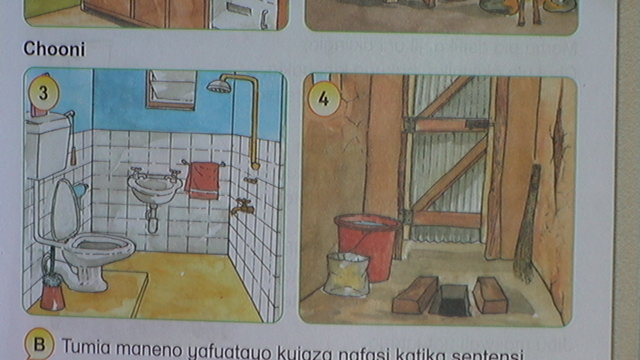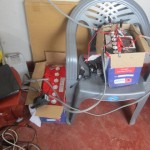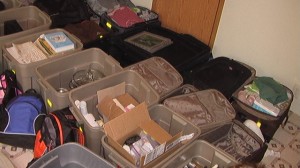With the difficulty of getting water each day, I’ve been trying to economize on our water use, both in cooking and dish-washing. So typical breakfasts and lunches are low-maintenance, while dinners tend to be more extensive. If we can, we eat our meals on cloth napkins rather than plates, and usually, though Marc and I prefer our own plates, the children eat out of a communal pot or bowl (this is actually customary in Kenya). In order to economize, and secondarily for health reasons, we’ve continued to reduce our intake of meat as well and now have it only once or twice a week. Here, in no particular order, are some random meals we’ve recently enjoyed:
Breakfast
Stir-fried bananas, sweet potatoes and peanuts with a side of fresh fruit (something Jane gave us which I can’t remember the name of, but couldn’t find in the Swahili/English dictionary and have never seen before)
Pineapple breakfast cake
Cream of Wheat
Bread and butter with a side of mango
Whole wheat pancakes (no syrup, with a sprinkling of raw sugar–love being able to get cheap, raw sugar here!)
Lunch
For lunch, we use up any dinner leftovers from the previous night. Beans or greens get mixed into a big batch of rice, or we eat plain rice with some garlic and salt. A couple of days, lunch was popcorn, nuts and fruit. (I found it surprising that Kenyans consider popcorn a main course! Not that any of us are really complaining about adopting the practice…) Another day we added coleslaw as a side to our rice, which was a nice change from the usual.
Supper
Chili and cornbread
Tilapia with mashed potatoes and spinach
Tortillas with refried beans, salsa, and guacamole and a salad of mixed greens with homemade dressing, accompanied by wheat bread with butter
Beef stew with cabbage and carrots, a side of fried potatoes, and ugali
Sweet and Sour Beans with cornbread and a side of boiled greens
Dessert
We only have dessert a couple of nights a week, and for our first couple of weeks we had cookies, which had been given to us as a treat when we first arrived. The other day, I made made a modified “Shoofly pie.” It calls for molasses but that is not to be found here, so I substituted thick sugar-water and it turned out to be a pretty good “sugar pie.”
Miscellaneous Thoughts…
One of our neighbors recently gave us a large bag of avocados, which will likely all be ready to eat in a couple of weeks (and all at the same time). So I’ll be looking for recipes with few ingredients that include avocado (besides guacamole, of course!)
Even though we *think* we’re eating relatively simply, we’re still pretty American in our cooking. Kenyans eat for function. They typically cook over a single (wood-fired) burner, so their options are, by default, a little more limited than ours. (I have to admit, though, that I love having an oven!) For the average Kenyan, most things are boiled in a single pot and eaten with very little (if any) seasoning. Plain roasted squash, plain mashed sweet potatoes with corn, bean and corn mix. We, however, still like “taste,” and prefer deep fried and salted. We even make our greens “fancy” by cooking them with onion, garlic, salt, and lemon juice. So, in the overall scheme of things, we still have a ways to go if, while in Kenya, we’re going to do as the Kenyans do.
What’s been on your menu lately? Have any ideas for simple meals that we might try?








![IMG_0217[1]](http://valuesdrivenfamily.com/wp-content/uploads/2012/03/IMG_02171-300x225.jpg)














